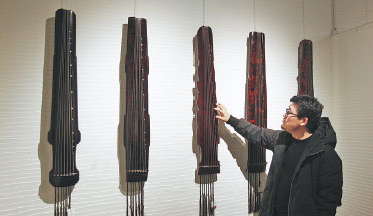Historical, cultural and creative environment thrives in capital

An array of collected guqin, a seven-stringed Chinese zither, goes on display at a themed museum founded by Juntianfang.
As a shining cultural center of China, Beijing boasts incomparably rich intangible cultural heritage - that for generations has added enduring and ineffable charm to the capital city.
Beijing Juntianfang Guqin Culture and Art Communication, which makes and develops the traditional guqin - a seven-stringed Chinese zither-was founded in 2001.
It takes two years to make a guqin and the company produces 500 to 600 of them every year, said Shan Lianqing, marketing manager of the company.
"The inheritance of intangible cultural heritage requires passion and spirit, and also needs financial support," he said, adding that production and sales of the guqin provides the key impetus to the craft's development as an industry.
In 2013, the company was designated as a national intangible cultural heritage protection research center and in the following year, its guqin art was listed as a representative project in the national intangible cultural heritage list.
"We develop our business model into different types based on the guqin industry," he said.
The company has developed the industry through various activities such as training, museums, exhibitions and performances.
To date, Juntianfang has trained nearly 800 students and has staged performances and exhibitions in countries including Israel, Denmark, Britain and Russia, according to the company.
"We are striving to build a museum that gives visitors an experience of vision, hearing and sensation," Shan said.
"As the capital, Beijing boasts the best cultural environment in our country, which gives us confidence to have better development here," he said.
The company will capitalize on every opportunity to inherit and introduce the traditional culture to the world, he added.

